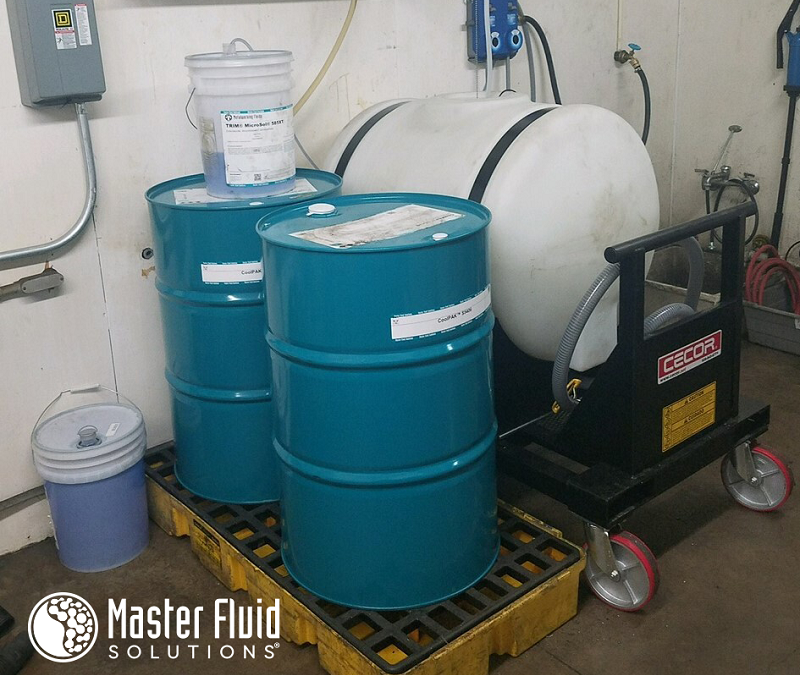Coolant makes up only a small percentage of metalworking shop costs, but it significantly impacts the machinery, operators, and the final workpieces. Everything in the shop — from the employees to the metals that are worked on — is affected by the coolant and its condition. For example, when bacteria grow in the sump, it causes problems like foul odors, shorter tool life, and dermatitis.
To extend coolant life and ensure it remains in top-notch condition, setting up and maintaining a coolant system is critical. Check out the basics of how to set up a coolant system and reap the benefits for years to come:
What Is a Coolant System?
The term “coolant system” is broad in definition. It can mean anything associated with the machine itself, such as filtration, to tramp oil removal systems like belt skimmers. It can also include coolant mixers to help achieve the right concentration of coolant in a system; coalescers to remove oil and particulates; or sump suckers that remove chips and sludge.
With those options available, metalworking facilities should decide what type of coolant system will work best for their shop floor. For example, a coolant makeup system can reduce consumption, maintain concentration, and reduce time the operators spend on filling machines, which will increase productivity. A company that shuts down its machines regularly may choose belt skimmers to remove tramp oil, since this can only be used when a machine isn’t running, and coalescers can continuously circulate coolant.
How to Keep Benefitting for the Long Haul
Once a company chooses a coolant system, it requires regular usage to continue delivering results. Regularly maintaining coolant is key to performance, which includes removing tramp oil at least weekly to keep the sump clean. This can be done with tools like Smart Skim Oil/Water separators, which skims tramp oil off the surface to cut down on coolant destroying bacteria, and prevents smoke and oil mist from permeating the workspace when machinery is in operation. Equipment like a Trucent Centrifuge uses a centrifuge to spin coolant together with cleaners to remove the tramp oil. Proper maintenance also includes filtering out metal fines to prevent sludge from settling in the sump,using the approved filters for the system and changing filters regularly. Cecor Sump Suckers come in a wide array of sizes and strengths and can be used with virtually any machine to filter sludge and solid chips out from coolant fluids.
Every so often, metalworking shops will also need to conduct a thorough cleanout and recharge of their sumps and systems using an approved cleaner that’s compatible with the coolant such as Master Stages™ Whamex™ or Whamex XT™. Use of a proper machine sump cleaner will make your cleanout more effective and lead to longer coolant life.
Using Coolant Systems Equates to Longer Tool Life, Happier Workers
Using the right coolant system regularly will not only extend fluid life, it will result in better quality parts, longer tool life, and less downtime for major cleanings. Coolant systems reduce the occurrence of foul odors and bacteria in the sump, and even cut down on the formation of smoke during machine operation. These systems will help keep a coolant in top condition until it’s time for a recharge.
For help setting up a coolant system or to evaluate an existing setup, contact Master Fluid Solutions® at +1 800-537-3365 or email us at info@masterfluids.com.

